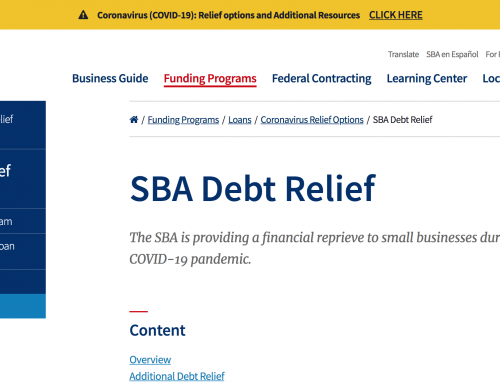Podcast: Play in new window | Download
Subscribe: Apple Podcasts | RSS
In this particular episode, you will learn
- About C-Corporations
- Introduction to S-Corporations
Podcast transcript:
Disclaimer: This information is for educational purposes only and not to be used as tax or legal advice. Tax law and accounting protocol are constantly changing.
Topics
Corporation (C-Corporation)
Share Types and Stock Ownership
Corporate Governance
Summary
Subchapter S Corporation (S-Corp)
Other Business and Not For Profit Structures
Conclusion: Business Types
Corporation (C-Corp)
The C-corporation (C-Corp) is a business entity that is legally separate from owners, referred to as shareholders. Taxation is also separate and occurs on the corporate level. As a separate entity, the owners are not personally liable for business debts and lawsuits. While the corporate structure provides liability protection, owners and employees can still be liable for negligence. Because a corporation is separate from an individual, it can operate in perpetuity. Corporations are an effective structure for outside investors, as they are protected from corporate liability, may have different ownership types, and can operate after the death of the main owner. Company ownership is in the form of corporate stock or shares. Several different share types exist, depending on the needs and size of a corporation. Owners can receive cash from the corporation in the form of dividends if there are retained earnings on the balance sheet due to prior profits.
Advantages
Corporations are designed to facilitate investment and live in perpetuity. Non-employee investors can own a fraction of the corporation without the concern of personal liability. Shareholders can be paid out profits via dividends or invest for potential capital appreciation. Capital appreciation refers to when stock purchased in a company increases in value over time for the shareholder. Stock held by investors have unrealized gains or losses until sold or become worthless. Large corporate stock is traded daily and the value of the stock is easily determined and realized with a sale. Because publically traded stocks are easy to buy and sell, investors may be more comfortable investing in stocks versus other types of business structures. Corporate law and ownership transfer is well established in court systems which appeals to many investors.
Disadvantages
The primary disadvantages to the corporate structure are double taxation and other compliance costs. Double taxation refers to the combined corporate tax on profits before dividends and dividend income taxed at the individual level. Dividends are not a tax deduction to the corporation and must be paid in order to transfer cash to shareholders. To reduce double taxation, a company may actively perform tax planning which requires current accounting records and additional professional fees. Owner employees are compensated through payroll, which adds to the cost and complexity of the structure.
Accounting
Accounting for corporations under GAAP requires double-entry, accrual based accounting for financial statements. Stock appears in the equity section of the balance sheet and different types of stock are outlined in the statement of shareholders’ equity. Because corporations are a taxable entity, significant differences may exist in GAAP income and taxable income, which are accounted for in technical ways, such as deferred tax accounts. Payments to non-employee shareholders are in the form of dividends, which reduce retained earnings when declared. An owner may not simply withdraw capital, as owners of partnerships and sole proprietorships can do.
Share Types and Stock Ownership
Stock in a corporation represents ownership and different rights to a corporation. Various types of stock may be issued that pay different dividends or have different voting rights. Preferred stockholders can have preferential treatment for dividends compared to common stockholders. Corporations have complex financing capacities such as bond issuances, stock warrants, appreciation rights, and other methods. As a form of compensation, corporations may also issue stock options which allow employees the right to company stock at a future date. Corporations may repurchase stock on the open market, which would then become treasury stock. Stockowners can sell shares on public or private markets.
Corporate Governance
Shareholders exercise power by electing the board of directors who are required to protect shareholder interests. The board of directors is responsible for hiring the chief executive officer (CEO) who is generally in charge of the entire business. The board decides on dividend payments and stock splits. Larger and publicly traded corporations listed on stock exchanges must follow strict governing protocols, which include a board of directors, audited financial statements, and financial controls.
Summary
Corporations are generally the best business structure to attract investors and provide limited liability to shareholders, but have disadvantages such as double taxation. Non-employee shareholders invest to make money at a future date in the form of dividends and stock sales. Businesses may be required to be a corporation depending on financing needs and investor types. Corporations are highly regulated and have complex tax, accounting, and other compliance requirements.
- Most common structure for large scale investment
- Provides shareholder liability protection
- Income is taxed at the corporate level and dividends are taxed at the shareholder level which creates double taxation
- Employees and employee owners are compensated through wages and sometimes with stock options
- Dividends may be paid to shareholders which reduce retained earnings on the balance sheet
Subchapter S Corporation (S-Corp)
The S-corporation (S-Corp) is a flow-through corporate structure and is not taxed at the entity level (rare exceptions apply). To become an S-Corp, the entity needs approval by the Internal Revenue Service (IRS) in the United States. The structure has similar legal protection that a regular C-corporation provides. A significant reason S-Corp status is elected is to reduce taxes on the individual return level by limiting income subject to self-employment. Attempting to limit tax via the S-Corporation is a complex and highly regulated area which is constantly changing. There are several laws regulating the tax benefits of S-Corps and significant restrictions on share types, ownership nationality, and division of profits. S-Corps can be a powerful tax planning tool, but may have other distinct disadvantages when seeking investment or dividing equity. Shareholder nationality and quantity limits may be imposed by the IRS.
Other Business and Not For Profit Structures
There are other business entity types that do not operate as a sole proprietor, partnership, limited liability company, or corporation. Trusts, for example, can own business assets and have hybrid structures of flow-through qualities and tax at the trust level. Cooperatives can allow for different forms of economic cooperation. There are also not for profit structures that have business components. Other structures exist that are specific to wealth transfer, charity, and community benefit.
Conclusion: Business Types
There are several business types with various advantages and disadvantages. There may be laws that dictate the selection of a business type, but most decisions are driven by liability protection, the need for outside investment, and tax planning. Typically businesses start with a simple structure and then adapt as needs change. The entity decision will be unique to the business type and needs of the owner(s), as well as other stakeholders.





Leave A Comment